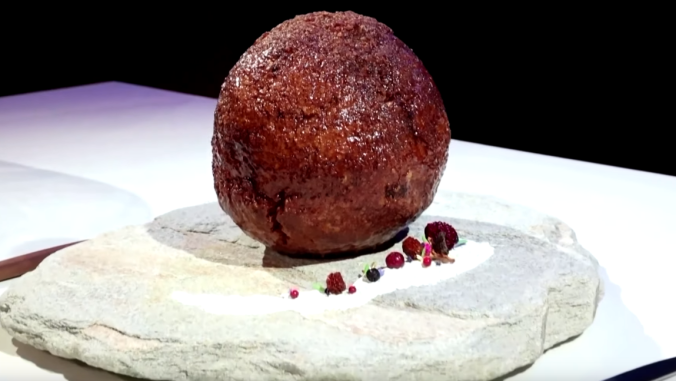We may soon be able to include woolly mammoth meatballs in our giant bowls of spaghetti
A meatball made from the extinct animal has been cultured by an Australian food company
Aux Features Woolly mammoth
Nearly two years ago, a biotech start-up announced that it was hard at work resurrecting the woolly mammoth. At the time, we assumed this project was aimed at giving humanity a second chance to experience the thrills of hunting one of our planet’s most majestic creatures to extinction yet again. What we didn’t envision, however, was that a parallel effort to bring the mammoth back to Earth may have taken the form of resurrecting the animal, bit by bit, as enormous meatballs.
The Guardian reports that an Australian company called Vow has mastered the dark arts required to create a woolly mammoth meatball—the first in the “new kinds of meat” it hopes to produce by “[mixing] and [matching] cells from unconventional species.” (Reuters has also uploaded a video of the meatball’s unveiling in the Netherlands earlier this morning.)
Like the Osaka University researchers who 3D printed wagyu beef, Vow’s goal is to use technology to dream up new kinds of lab-grown meat that replace livestock farming. It, The Guardian writes, “aims to demonstrate the potential of meat grown from cells, without the slaughter of animals, and to highlight the link between large-scale livestock production and the destruction of wildlife and the climate crisis.”
The mammoth was chosen as a prime meatball-producing candidate because, as Vow co-founder Tim Noakesmith puts it, “it’s a symbol of diversity loss and a symbol of climate change.” While working with Professor Ernst Wolvetang at the University Of Queensland’s Australian Institute For Bioengineering, Vow used “the DNA sequence for mammoth myoglobin, a key muscle protein in giving meat its flavor, and filled in the few gaps using elephant DNA.” Myoblast stem cells from sheep were then combined with the mammoth/elephant DNA sequence to grow the meatball.
Prof. Wolvetang explained to The Guardian that the team’s first idea was to create dodo meat—which we imagine could’ve debuted as drumsticks placed next to a side of blue cheese dressing and pieces of celery and carrot—but that “the DNA sequences needed do not exist.”
Though the woolly mammoth was suitable as a replacement animal, the only catch is that nobody has actually tasted the meatball its DNA produced. Prof. Wolvetang said this is a necessary caution since “we haven’t seen this protein for thousands of years” and “we have no idea how our immune system would react when we eat it.”
Still, the professor notes that another woolly mammoth meatball could be made “in a way that would make it more palatable to regulatory bodies.” (And, hopefully, regular bodies, too.)
Even better is that this extinction meatball brings us one step closer to the fulfillment of a long-cherished dream: Finally getting to tuck into one of those racks of delicious-looking brontosaurus ribs from the Flintstones’ credits.
Send Great Job, Internet tips to [email protected]